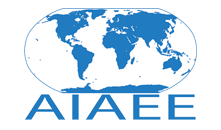Keywords
Agriscience Teachers; ICT; Information and Communication Technologies; Trinidad and Tobago
Abstract
The purpose of this study was to investigate information and communication technologies (ICT) usage among Agriscience teachers in Trinidad and Tobago. This knowledge will be used to develop preservice and inservice professional development programming for these teachers. Eighty-five percent (n = 77) of the secondary Agriscience teachers responded to a survey that assessed: (a) technology current use, (b) technology beliefs, (c) technology skills, (d) technology intentions, (e) barriers to technology use, and (f) personal data. Results indicated that Agriscience teachers in Trinidad have accepted ICT as useful tools. Teachers used ICT most frequently for personal reasons and less frequently for school-related tasks. Teachers generally believed that ICT help them accomplish tasks more quickly, enhance their quality of work, were easy to use, and that it could help to keep in touch with their students. However, beliefs varied based on age, career intentions, and computer literacy. Agriscience teachers also indicated that they possessed moderate skill levels and intend to use ICT as a part of their jobs. Differences in perceived skills were noted based on age, experience, and career intentions. Primary barriers centered on technical issues such as lack of hardware, inadequate technical infrastructure, and connectivity. Additionally, teachers believed that lack of a reward structure impeded technology usage.
Rights Statements
This Item is protected by copyright and/or related rights. You are free to use this Item in any way that is permitted by the copyright and related rights legislation that applies to your use. For other uses you need to obtain permission from the rights-holder(s).
Recommended Citation
Ganpat, W.,
Ramdwar, M.,
Stripling, C. T.,
&
Roberts, G. T.
(2013).
Information and Communication Technology Use
by Agriscience Teachers in Trinidad and Tobago.
Journal of International Agricultural and Extension Education, 20(2), 19-33.
DOI: https://doi.org/10.5191/jiaee.2013.20202



